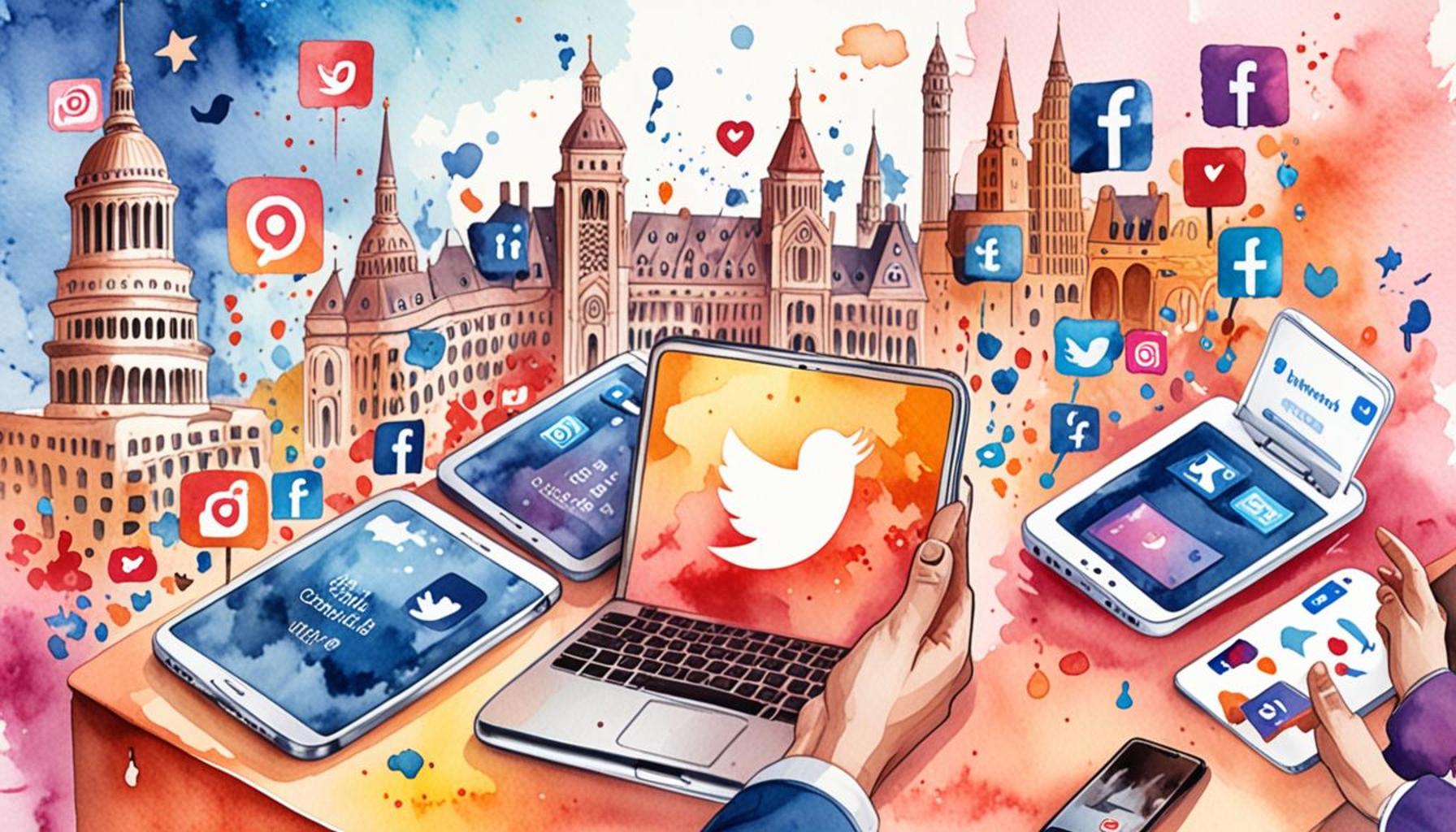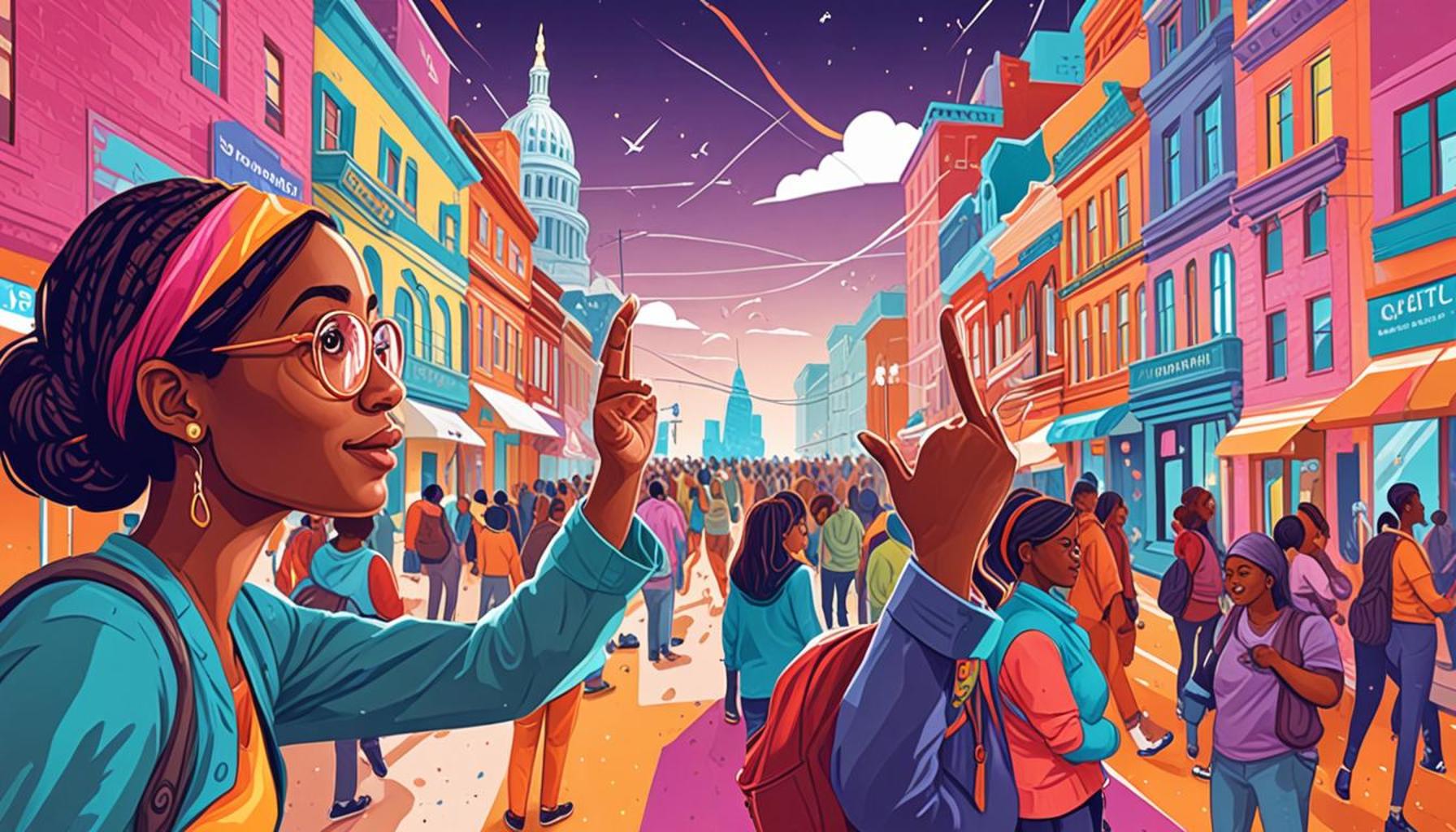How Social Media Platforms Are Transforming Access to Government Benefits

Transforming Access to Government Benefits
In today’s digital age, social media platforms are reshaping how individuals access government benefits. These platforms are not just for social interactions; they have become vital tools for disseminating information and assisting citizens in navigating complex governmental resources. The landscape of public service delivery is shifting as these online networks facilitate quicker and more approachable ways to obtain essential information.
Consider the following ways social media is making an impact:
- Instant Information Sharing: Updates and announcements regarding benefits can be shared rapidly across platforms. For instance, during the COVID-19 pandemic, state agencies utilized platforms like Twitter and Facebook to disseminate real-time information about stimulus checks and unemployment benefits, significantly impacting citizens’ ability to access timely assistance.
- Community Support: Users can form support groups to discuss their experiences and guide each other through the application processes. Facebook groups, for example, have emerged as thriving communities where individuals share tips and strategies for navigating the often-complicated systems of healthcare and social security benefits. These platforms enable peer-to-peer engagement, empowering users to help one another by sharing personal anecdotes and resources.
- Outreach Programs: Many government agencies leverage social media to reach underserved populations who may struggle to access resources. Initiatives like the USDA’s efforts to promote the Supplemental Nutrition Assistance Program (SNAP) through Instagram campaigns successfully target food-insecure communities. Such outreach ensures that vital programs are visible and understandable to those most in need.
According to recent studies, over 70% of Americans are active on social media, significantly increasing the likelihood that important information about benefits reaches those who need it most. This shift towards a more digital-first approach suggests that government agencies can no longer rely solely on traditional communication methods. By embracing social media, they can enhance engagement and awareness regarding benefits, such as unemployment aid, food assistance, and healthcare programs.
Furthermore, platforms like LinkedIn and Twitter are often used for professional development resources, which include information on job training programs and career services available through government initiatives. For individuals navigating transitions in their careers, social media serves as both a support network and a resource conduit.
As you dive deeper into this topic, you’ll discover how these platforms are not only simplifying access but fostering a sense of community, enabling discussions that help individuals better understand their rights and available resources. The integration of technology into public service delivery holds immense potential to create a more informed and connected citizenry—one that can advocate for themselves and others in securing essential government benefits.
YOU MAY ALSO LIKE: Read read another article
Enhancing Information Accessibility through Social Media
The rapid evolution of technology has ushered in an era where social media platforms serve as pivotal channels for accessing government benefits. Traditionally, navigating the maze of programs and services offered by government agencies required considerable time and effort. However, social media has drastically reduced the barriers to obtaining essential information, enabling citizens to stay informed like never before.
One of the most significant advantages of social media is the ability to relay real-time information to a large audience. Government entities are leveraging platforms such as Facebook, Twitter, and Instagram to provide updates that allow individuals to understand the benefits they qualify for, how to apply, and any deadlines associated with these programs. For example, states across the U.S. have harnessed these channels to promote COVID-19 relief efforts, showcasing exact steps citizens need to take, thereby democratizing information access. This not only empowers individuals but also encourages a sense of agency in pursuing available aid.
The value of social media extends beyond just the dissemination of information; these platforms also foster interactive engagement with government entities. Citizens can directly pose questions, report issues, and receive feedback in a timely manner. Engaging with constituents through live Q&A sessions or comment sections creates a more transparent atmosphere where individuals feel heard and valued. Additionally, many government websites have embraced functionalities that allow users to share relevant posts, amplifying important information through user networks.
Moreover, many social media platforms offer targeted outreach capabilities, which play a crucial role in connecting with specific demographics that might be less engaged in traditional media. For instance:
- Youth Engagement: Platforms like TikTok are being explored by some local agencies to communicate benefits targeting younger populations, such as educational grants.
- Support for Individuals with Disabilities: Twitter and Facebook have been used to share resources tailored to individuals seeking assistance with disability benefits, breaking down complex information into digestible formats.
- Promotion of Mental Health Programs: Social outreach initiatives on Instagram focus on mental health benefits, extending resources to individuals who may not feel comfortable seeking help in person.
The growing accessibility of government benefits through social media platforms illustrates a transformative approach to public service. As more citizens turn to digital solutions for answers, the expectation for responsiveness and transparency grows correspondingly. The conversation surrounding benefits is evolving; it is no longer a one-way channel but rather a vibrant dialogue that engages communities in a shared understanding of available services.
As we examine how social media continues to reshape access to government benefits, it is essential to highlight the broader implications of this shift. Ultimately, the merging of technology and public service heralds a future where informed citizens can more effectively advocate for themselves and their peers in securing critical resources.
| Advantage | Description |
|---|---|
| Increased Awareness | Social media serves as a powerful tool for government bodies to disseminate important information about available benefits, ensuring that citizens are well-informed. |
| Enhanced Engagement | Platforms foster community engagement, with users sharing experiences, tips, and challenges related to accessing government benefits, ultimately building a supportive network. |
| Real-time Updates | Government agencies can provide timely updates on policy changes, application processes, and deadlines, significantly reducing confusion and misinformation. |
| Accessibility | Social media breaks down barriers, allowing individuals from diverse backgrounds to access essential information regarding government benefits without traditional obstacles. |
The integration of social media into the realm of government communication is nothing short of revolutionary. It not only enhances the awareness of benefits available to citizens but also fosters an environment where individuals can engage, share, and support one another. By utilizing platforms such as Facebook, Twitter, and Instagram, governmental bodies are able to reach a broader audience, making crucial information accessible to every demographic. In addition, the real-time nature of social media ensures that stakeholders receive up-to-date information on policies and benefits, reducing the lag commonly experienced with traditional communication methods.Moreover, the democratization of information via social media platforms transcends socioeconomic barriers, enabling more equitable access to government resources. It empowers citizens to actively participate in discussions and seek guidance on navigating the often complex landscape of government benefits. The dialogue and interaction made possible through social media can result in a more informed public, leading to higher participation rates in the programs designed to assist them. As this trend continues to grow, so does the potential for improved community support and enhanced government accountability.
ADDITIONAL INSIGHTS: Expand your understanding here
Breaking Down Barriers: Inclusion and Equity Through Social Media
As we delve deeper into the role of social media platforms in transforming access to government benefits, it becomes clear that these digital tools are not just enhancing communication; they are actively breaking down long-standing barriers that have historically hindered marginalized communities. By democratizing access to information and services, social media is playing a crucial role in promoting inclusion and equity among citizens.
One of the standout features of social media’s influence is its ability to reach traditionally underserved populations. Individuals in rural areas, low-income neighborhoods, or communities with limited internet access are now finding new opportunities to engage with government services through platforms they already use daily. For example, partnerships between government programs and community organizations often promote targeted messaging on platforms like Facebook, ensuring critical information reaches those who may not have otherwise accessed it.
Moreover, the emphasis on visual content in platforms such as Instagram and TikTok caters effectively to varying literacy levels and learning styles, making complex information more accessible. Short, engaging videos explaining the application processes for programs like the Supplemental Nutrition Assistance Program (SNAP) or unemployment benefits can simplify what may once have felt like an overwhelming task. This approach ensures that everyone, regardless of their background or education level, can understand their eligibility and the steps necessary to apply.
Additionally, the interactive nature of social media enables advocacy groups and citizens to share firsthand accounts and experiences regarding government benefits. Such peer-to-peer exchanges foster a sense of community, and testimonials can serve as powerful motivators for others to pursue the support they are entitled to. For instance, stories shared via Twitter threads can amplify the voices of individuals who previously felt alone in their struggles, highlighting the importance of direct experiences when navigating government services.
Furthermore, social media platforms are becoming essential tools for public feedback and policy influence. By using hashtags, comment sections, and surveys, citizens can express their opinions on the effectiveness of government benefit programs, pushing for necessary reforms. This feedback loop allows agencies to fine-tune their services, enhancing responsiveness to community needs. It exemplifies how social media can be a platform not only for information dissemination but also for driving systemic change.
In contrast to traditional forums, which may operate on a one-sided communication model, social media empowers users to be active participants in discussions surrounding government assistance. With initiatives like town hall meetings streamed via live social media, citizens can engage with officials in real time, ensuring their voices are heard in federally and state-funded initiatives.
The intersection of social media and government benefits continues to evolve, with innovative approaches being taken to maximize outreach and support. As an increasing number of users turn to these platforms as their primary sources of information, the potential for greater awareness and accessibility grows. A more informed public not only holds government agencies accountable but also cultivates an environment where navigating the complexities of benefits is less intimidating, fostering a more inclusive society for all.
YOU MAY ALSO LIKE: Read read another article
Conclusion: The Future of Access to Government Benefits
In conclusion, the rise of social media platforms has revolutionized the way citizens interact with government benefits, fostering an unprecedented level of accessibility and engagement. By leveraging these digital networks, marginalized communities can now access vital information and services that were previously out of reach. This transformation is not merely about convenience; it represents a fundamental shift toward a more equitable system where citizens are empowered to navigate complexities with greater ease.
The importance of visual content and user-friendly messaging cannot be overstated, as these tools effectively lower barriers associated with literacy and understanding. Coupled with the dynamic, interactive elements of social media, these platforms facilitate a communal experience that encourages advocacy and collective action among users. As individuals share their stories and insights, they not only enhance awareness but also contribute to a culture of accountability that drives governmental improvements.
As we look ahead, the intersection of social media and government benefits is set to become even more integral to public policy discussions and implementation. Emerging technologies and innovative strategies promise to further enhance communication, engagement, and feedback, shaping a future where every citizen has equal access to essential support services. This ongoing evolution challenges us to rethink how government interacts with its citizens, ultimately paving the way for a society characterized by transparency and inclusivity. For those interested in understanding the broader implications of this transformation, further exploration into case studies and ongoing initiatives may reveal valuable insights into the future of public service delivery.



